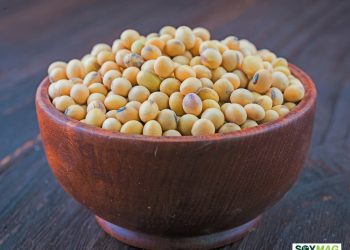The U.S. soybean market in 2025 presents a unique set of challenges and opportunities for grain merchandisers. As global supply remains robust and demand dynamics shift, the relationship between soybean futures and local cash basis becomes the single most important factor for effective risk management. While futures provide a critical tool for price discovery and hedging, the local cash basis determines the actual price a merchandiser receives. Mastering the art of managing basis risk is paramount for securing profitability in a market defined by volatility. This guide provides a detailed look at the 2025 outlook for soybean basis and outlines strategic hedging techniques for merchandisers.
Understanding the Core Components: Futures, Basis, and Risk
Before diving into strategies, it’s essential to have a clear grasp of the fundamental concepts.
What is Soybean Futures?
Soybean futures are standardized, legally binding contracts to buy or sell a specific quantity of soybeans at a predetermined price on a future date. Traded on exchanges like the Chicago Board of Trade (CBOT), they reflect the collective expectation of future soybean prices, often driven by macro factors like global supply and demand, weather, and geopolitical events.

What is Soybean Cash Basis?
The cash basis is the difference between the local cash price of soybeans at a specific location (e.g., a grain elevator, processor, or port) and the price of a specific futures contract.
Basis = Local Cash Price – Futures Price
Basis is a local indicator of supply and demand.
- Strong Basis (less negative or positive): Indicates strong local demand relative to supply. This means local buyers (crushers, exporters) are willing to pay a premium to the futures price to secure physical bushels.
- Weak Basis (more negative): Indicates abundant local supply relative to demand. Buyers have less incentive to bid aggressively, so the local price is at a significant discount to the futures price.
The Merchandiser’s Challenge: Managing Basis Risk
A merchandiser’s primary risk is not just a change in the futures price, but a change in the basis. A classic hedging strategy involves selling futures to lock in a price. However, if the basis weakens unexpectedly, the merchandiser’s final sale price will be lower than anticipated, eroding margins. This is basis risk—the risk that the basis will change in an unpredictable way between the time a hedge is placed and when it is lifted.
2025 U.S. Soybean Basis Outlook: Key Drivers
The basis for U.S. soybeans in 2025 is expected to be influenced by several key factors. Merchandisers must monitor these drivers to form an accurate basis forecast.
1. Robust Domestic Crushing Demand
The burgeoning U.S. renewable diesel industry is a major bullish factor for soybean basis, especially in the interior of the country. New and expanded crush plants are coming online, creating a powerful new source of domestic demand for soybeans and soybean oil. This structural shift in the market is expected to keep basis levels stronger than they would be otherwise, as processors compete for local supply.
2. Export Competition from South America
The U.S. export basis, particularly at the Gulf, will face significant pressure from large crops in Brazil and Argentina. As a result, the export corridor basis is likely to be weaker, or more negative, compared to interior basis. This creates a disconnect between different regions of the country, where basis could be strong in the Midwest and weak at the Gulf.
3. Transportation and Logistics
The availability and cost of barges, railcars, and trucks will directly impact the basis. A lack of available transport at harvest, for example, can weaken basis as merchandisers and farmers have a limited ability to move grain. Conversely, bottlenecks at ports or a surge in demand for shipping can strengthen basis at origin points.
4. Farmer Selling Behavior
How farmers decide to market their crops is a huge variable. If farmers hold onto their bushels after harvest, the physical supply will tighten, and basis will strengthen. However, if they sell aggressively to meet cash flow needs, a surge in supply will weaken the basis.

Strategic Hedging Scenarios and Techniques for Merchandisers
Merchandisers need to choose a hedging strategy that aligns with their specific risk tolerance and market forecast. Here are several techniques to manage basis risk in 2025.
Strategy 1: The Short Futures Hedge (The Classic Approach)
When to Use: When a merchandiser has a physical inventory of soybeans or has purchased them from a farmer and expects futures prices to fall, but is comfortable with the current basis level.
How it Works:
- Purchase soybeans: Merchandiser buys physical soybeans at a local cash price.
- Sell futures: Simultaneously, the merchandiser sells an equivalent number of soybean futures contracts (e.g., November contract for a fall delivery).
- Lift the hedge: When the soybeans are sold to a processor or exporter, the merchandiser buys back the futures contract.
Key Consideration: The success of this strategy hinges on the basis. The merchandiser profits if the basis at the time of sale is as strong as, or stronger than, the basis at the time the hedge was placed. If the basis weakens, the gain on the futures position is offset by a loss on the cash position, and the overall margin shrinks.
Strategy 2: The Basis-Only Contract
When to Use: When a merchandiser is confident in their forecast for a strengthening basis but is concerned about a fall in the overall futures price.
How it Works:
- Contract with the buyer: The merchandiser enters a contract to sell soybeans at a specific basis level (e.g., 20 cents under November futures). The futures price is left “unfixed.”
- Hedge the futures price: The merchandiser immediately sells the appropriate futures contract to lock in the futures component of the price.
- Finalize the sale: When the soybeans are delivered, the merchandiser “fixes” the futures component of the price at the prevailing futures market level, and the basis is already set in the contract.
Advantages: This strategy effectively isolates the basis risk. The merchandiser is fully protected from changes in the futures price and can focus entirely on managing the local basis. This is particularly effective in a market with strong local demand.
Strategy 3: Using Options to Manage Risk and Flexibility
When to Use: When a merchandiser wants to protect against price declines but wants to maintain the flexibility to participate in a potential futures rally or to benefit from a stronger-than-expected basis.
How it Works:
- Buy a Put Option: The merchandiser buys a put option, which gives them the right, but not the obligation, to sell soybean futures at a specific strike price. This establishes a price floor.
- Sell a Call Option: For a more aggressive strategy, a merchandiser might sell a call option to generate premium income and lower the cost of the put. This creates a “collar” or price range.
Advantages: This provides more flexibility than a simple short futures hedge. If futures prices rise, the merchandiser can still sell the physical commodity at a higher price and let the put option expire worthless. This allows them to capture the benefit of a rising market while still being protected on the downside.
The Bottom Line for 2025
The U.S. soybean market in 2025 demands a proactive and dynamic approach to hedging. Merchandisers who rely solely on traditional short futures hedges without considering the nuances of the local cash basis may be leaving money on the table or, worse, exposing themselves to significant basis risk.
The key to success will be a deep understanding of local market fundamentals. Merchandisers should:
- Monitor Basis Trends: Track historical and current basis levels at their specific locations and for different delivery periods.
- Analyze Demand: Pay close attention to announcements of new crush plants and the pace of domestic and export sales.
- Factor in Logistics: Stay informed about transportation costs and the availability of shipping.
- Communicate with Farmers: Understand farmer selling intentions to anticipate local supply movements.
By integrating these insights into their hedging strategies, soybean merchandisers can navigate the volatility of 2025 and secure a more predictable and profitable margin, turning basis from a risk into a strategic advantage.









